
All categories
Featured selections
Trade Assurance
Buyer Central
Help Center
Get the app
Become a supplier

(37763 products available)


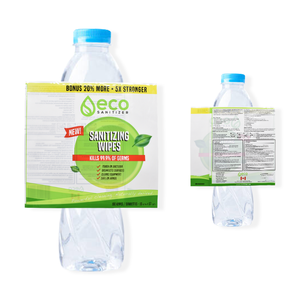

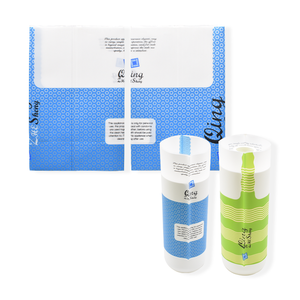
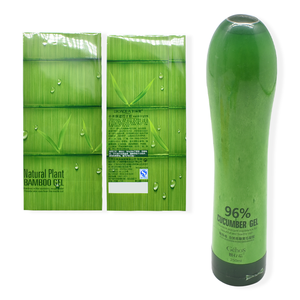
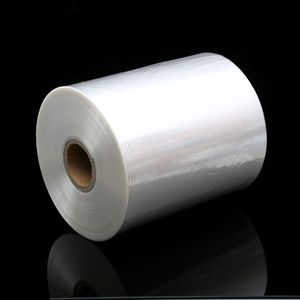
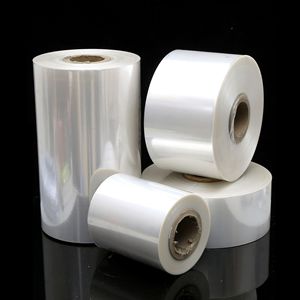
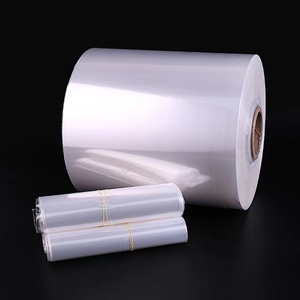

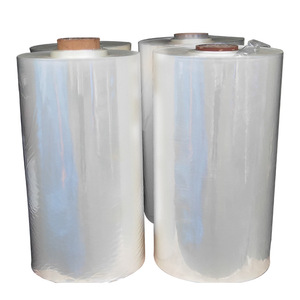
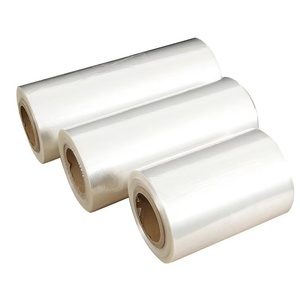








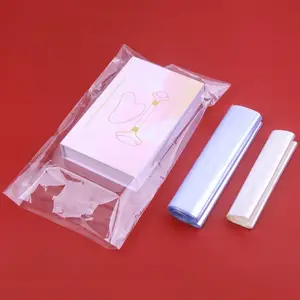

























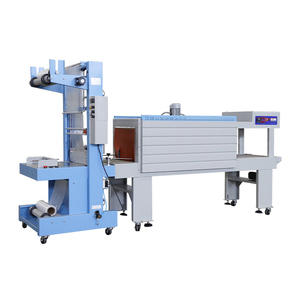
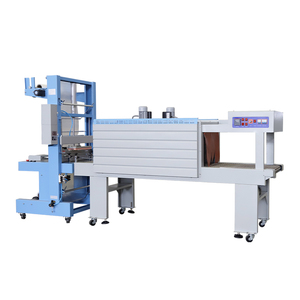
Shrink films are manufactured using different types of materials. Each of these materials affects the functionality and usability of the shrink films in different ways.
The best kind of shrink wrap for bottles is determined by the product and the manufacturer’s goals when wrapping items.
PVC is one of the most common types of shrink films. This is due to its affordability, ability to be easily manipulated, and the excellent clarity it offers. PVC shrink films are ideal for low-temperature applications as they tend to shrink at lower heat levels than most other options.
This film is applied in the packaging of pharmaceuticals and perishable food products. These products need an airtight seal. The film has excellent barrier properties against moisture, air, and other gas elements that tend to reduce the life of packaged goods.
Polyethylene (PE) shrink films are mainly applied due to their high resistance to punctures and tears. They are particularly useful for packaging with sharp edges or irregular surfaces. Low-density polyethylene (LDPE) shrink films are especially used in products that are needed to be packaged with a low shrink temperature.
Oriented polystyrene (OPS) shrink films are applied in packaging items in need of a balance between clarity and seal strength. The films are designed for bottle packaging and provide decent shrink properties. This makes them a viable alternative to PVC in certain applications.
Polycarbonate vinyl shrink films have excellent clarity and high strength properties. They are applied in situations that require durable and aesthetic packaging. These films provide UV protection. Thus, they are mainly suited for products that require protection from UV light.
Manufacturers use biodegradable shrink films made from renewable resources like PLA (polylactic acid) and cellulose. These films are envisaged in sustainable packaging solutions. They are ideal for companies looking to reduce their environmental impact.
Shrink films are designed in different ways depending on the requirements of the product being packaged. Understanding the different dimensions of heat shrink plastic for bottles design can help in making an ideal choice for effective product packaging.
Most high-quality shrink films are printed with sharp graphics, vibrant colors, and excellent detailing. Additionally, since companies print the films, they can apply custom branding to the films. This increases the films’ potential to develop better brand recognition and visibility in the market.
The thickness of the shrink film plays a very important role in its durability and clarity. A thinner film requires less heat to shrink, which makes it ideal for products that are sensitive to temperatures. In contrast, thicker films offer better protection to the products and are typically applied in heavy items.
The shrink ratio is the proportion by which the film will reduce in size when heat is applied. Common shrink ratios are 40:60 and 50:50. High shrink ratios are generally applied when packaging items of irregular shapes or sizes. Manufacturers also apply low shrink ratios in the packaging of cylindrical products.
Shrink films also usually come in a variety of color options. Manufacturers apply opaque shrink films to provide tamper evidence and conceal product branding. Translucent and transparent films provide visibility to the product. This adds an element of visual appeal to the packaging.
Shrink films are manufactured with different textures and finishes. These include matte, gloss, and custom textures. Each option offers a distinct feel and appearance to the product. This can make it more luxurious or give it a more industrial look. Gloss finish films improve clarity and color depth.
Shrink films are used according to their optimum requirements for providing the best results. To know the applications of the bottle shrink wrap in its best condition, it is imperative to understand the film’s specifications and maintenance requirements.
Film material
Shrink films for bottles are manufactured using different materials like PVC, LDPE, and polypropylene. Each material has its own unique properties that determine its compatibility with certain bottle shapes and sizes. Manufacturers customarily print the films for branding using gravure or flexographic printing techniques.
Shrink temperature
Every shrink wrap film has a specific temperature at which it begins to shrink. Usually, this temperature ranges from 100 to 150 degrees Celsius. When the temperature exceeds the specified range, the film may become too tight. On the other hand, when the temperature is below the range, the film may not shrink adequately.
Adhesive properties
The inner side of most shrink films for bottles is usually coated with a layer of adhesive. The purpose of the adhesive layer is to allow the film to securely bond to the surface of the bottle. The adhesive is selected based on the type of bottle material to ensure proper adhesion.
Clarity and thickness
Along with tightness and temperature, the clarity and thickness of shrink films are important factors in ensuring the success of the films. Films are manufactured in various thicknesses, such as 50, 75, and 100 microns. These thicknesses are filed based on the protection and visibility needed for the products.
Shrink films can be applied in various scenarios for protecting, branding, and providing safety for bottled products. The choice of film often depends on the type of bottle used, the environment it will be in, and the desired aesthetic finish.
Beverage bottles such as water, juice, and soft drinks are often wrapped in a shrink plastic for bottles to enhance product safety, tamper-evidence, and aesthetic appeal. The choice of film for this application is often based on the bottle material. This ensures compatibility and achieves a tight, wrinkle-free finish.
Cosmetic bottles are normally wrapped in shrink films to provide a premium appearance while safeguarding products from tampering and contamination. Many movie films also add ~~‘glossy finish’ to the products, which enhances the products’ visual appeal on retail store shelves. The type of film used here depends on the product line and brand image.
In the pharmaceutical industry, plastic bottle wrapping films are used to ensure the integrity and safety of medication bottles. PVDC shrink films are usually the go-to in these applications because they offer superior barriers to moisture and gases. They are vital in preserving the efficacy of heat-sensitive medications during storage and transportation.
Food products stored in glass or plastic bottles also utilize shrink films. The films offer tamper resistance and extend the shelf life of food items by providing an additional barrier to light and oxygen. In these cases, manufacturers select films that comply with food safety regulations and have low migration potential.
Shrink films are also customarily applied in promotional packaging. By bundling bottled beverages with additional items, companies give special offers or celebrate seasonal releases. The film helps keep the items together while improving the package’s aesthetic appeal through custom printing.
Shrink films are ideal for bottles because they bring about effective packaging. In addition to effective packaging, the films provide the desired aesthetic appeal and product safety.
Using shrink film provides consumers with immediate visual confirmation of whether a bottle has been tampered with or not. This is particularly important for food, beverage, and pharmaceutical industries where product safety is non-negotiable.
A few shrink films provide UV protection. They prevent harmful ultraviolet rays from affecting bottled liquids, thereby preserving the integrity and quality of products that are sensitive to light. These products include cosmetics, oils, and juices that may otherwise degrade over time.
The packaging of products largely determines how they are perceived in the market. Shrink films provide a canvas for brand owners to convey their brand identity and values. Customizable films enable brands to differentiate themselves from their market competitors. Thus, helping to enhance brand recognition, especially in densely populated retail environments.
Manufacturers are now adopting biodegradable shrink films made from renewable resources like PLA (polylactic acid). These eco-friendly options help reduce the environmental impact of bottle covers while delivering the same functional benefits as traditional films.
Shrinking films are affordable to use. They require very low capital investment in manufacturing compared to rigid containers or other types of packaging. They also provide high packaging throughput speed. This makes them an economically attractive choice for high-volume production lines.
Shrink films improve the aesthetic value of packaged products. They conform closely to the shape of bottles, offering a sleek and streamlined appearance. When combined with vibrant print quality, this results in a visually appealing package that attracts potential customers to the product.
A1. No. Each plastic bottle wrap is suited to certain applications. But they can still be suitable for a range of applications. Bottled products require specific characteristics from the shrink films. This helps in effectively meeting the needs of different product categories.
A2. Sustainability initiatives have considerably increased the demand for eco-friendly shrink films. These films are made from renewable resources like PLA. They minimize the ecological impact of packaging manufacturers who are focused on being sustainable use these films.
A3. Manufacturers consider factors like market demands, production efficiency, material availability, and technological advancements when selecting the type of shrink film to produce.
A4. The producers select films with optimal heat resistance, moisture barriers, and seal strengths. These ensure they protect against environmental factors while providing a tight seal that protects the product from contaminants.
A5. Biodegradable films, though still in the early stages of development, offer comparable functionalities. They contribute to reducing plastic waste by breaking down within a specified time frame upon exposure to certain environmental conditions.